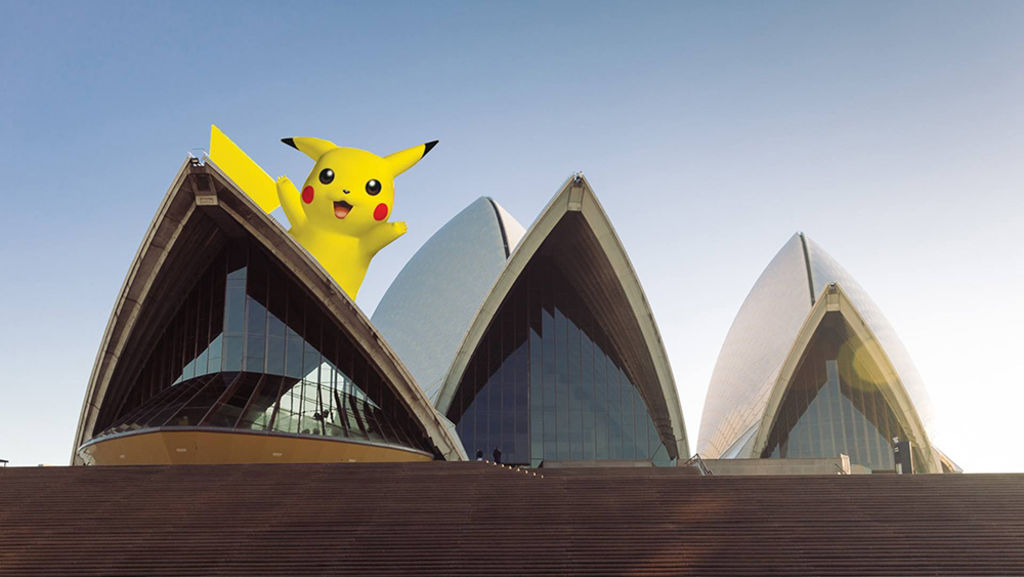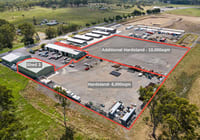
Australian small businesses catch Pokemon profits
At Sydney Fish Market, you can catch a Krabby while enjoying a seafood lunch.
The popular retailer and tourist attraction is just one of many businesses in Australia realising the benefits of embracing the game that is capturing new fans even faster than players are snaffling the virtual characters – Krabby included.
Catch a Pokemon, stock up on Pokeballs while grabbing a coffee – that’s the basic sell of the “Pokeconomy”.
Since Pokemon Go was released on July 6, it has swiftly gripped the lives of millions of people worldwide.
Some Sydney Fish Market staff have become hooked on the game while players gather at the venue to take advantage of the Pokemon “beacons” in the vicinity, says Stephanie Williams, corporate social responsibility and external relations manager.
These beacons, known as Poke Stops, can be activated by players to lure Pokemon characters to the site. This, in turn, attracts more players to the vicinity.
“We welcome Pokemon Go players but SFM is a busy and potentially hazardous site so we want everyone to be alert and stay aware at all times,” Ms Williams said.
“The boardwalk seems to be a popular location for players. It’s a bit of fun really … you can come to SFM and catch a Krabby while having crab for lunch.”
When Andrew Duong first heard of Pokemon Go, he ignored it. He needed to focus on work, running his dessert bar in Cabramatta in Sydney’s south-west.
Even when a friend notified the 28-year-old that What The Fudge cafe was a Poke Stop on the mobile game’s map, the light didn’t go on, although “all my staff, all my customers were playing it”.
But scrolling through his Instagram feed one day he saw a customer’s shot of her strawberry kisses waffles with a squiggly Weedle creature on top.
“An angry bug wanted to fight me over them,” she’d joked.
It hit Duong then that there was money to be made.
He started promoting the Pokestop online, and put a Pikachu sign in the cafe’s window announcing its status to the world.
“Catch Pokemon in the comfort of our Pokestop cafe with free wi-fi! Treat yourself and your Pokemon to delicious dessert.”
The week’s not even over yet and sales have already jumped 50 per cent, he tells AAP.
The game, which evolves the field of Google Glass’s augmented reality, uses a player’s phone camera and GPS to track their location and place Pokemon around them in the real world.
Players follow an interactive street map that tells them where Pokestops and battle “gyms” are, heightening their chances of finding the creatures.
Pokestops are found at many public places such as monuments, street art, statues and meeting places.
Gyms are often located at cafes, hotels and restaurants. The positions of both types of virtual beacon were pre-determined by the game developers.
Hunting down the 151 creatures in real life is an addictive adventure for many, and the obsession’s paying off for businesses quick enough to recognise it.
The game’s in-app purchases allow users to buy “lure” and “incense” incentives that attract Pokemon to a map stop for 30-minute periods.
 Screen shots of Pokemon Go out and about in Sydney.
Screen shots of Pokemon Go out and about in Sydney.
Patrons lingering in cafes and bars have been popping the misty-purple lures around the watering holes before owners caught on to what was keeping them there.
Mr Duong plans to buy a few lures next week, but many others have already stocked up.
One fast-food joint in downtown Sydney is promising to have four of its lures operating nonstop during the weekend while offering a 50 per cent meal discount.
Hairdressers and bottle shops are advertising rare Pokemon sightings, while a nightclub in the Shire is throwing a cosplay party complete with themed cocktails.
Even the Sydney Opera House is planning a safari hunt: “Cure your Monday-itis as we lure Pokemon to our Forecourt for two hours,” the Facebook event reads.
Discounts, promotions, marketing – it’s all the rage and while Pokefever continues Mr Duong plans to make the most of it.
Along with the lures, he’s ordered stickers to be made up in the shape of Pokeballs with his cafes logo.
“The funny thing is, when I first started my shop I had a mural of Pokemon characters painted on my wall,” he said. “The artist and I were always into Pokemon as kids so it’s a great coincidence right now that we’re a Pokestop.”
The side hustle isn’t just limited to Pokestops though.
Industries have sprung up around drivers chauffeuring trainers around hunting grounds, while freelance work site Airtasker has set up a landing page for people wanting to pay others to go catch Pokemon for them while they’re at work.
While entrepreneurs are making the move first, if the fad continues, we can expect the big guys to jump in, too, says the Australian Retail Association.
“Small businesses are able to turn very quickly and jump on trends, but we do see it across the board too with bigger retailers who have the funds to get in,” spokeswoman Carla Bridge said.
“The really innovative ones would be rolling out their Pokemon ads within the month, given the pace of the trend and how quickly it’s picking up.”
Of course, it depends on a store’s target market though. Old people are not fans of the game.
“If your target is a 60-year-old man, he’s probably not going to be walking around on a Pokemon Go phone,” Ms Bridge says.
But she says younger consumers together with the timing of school holidays, could lead to retailers experiencing a pick-up.
For those savvy enough, there’s plenty of Pokemon profit to catch.
With staff reporters










